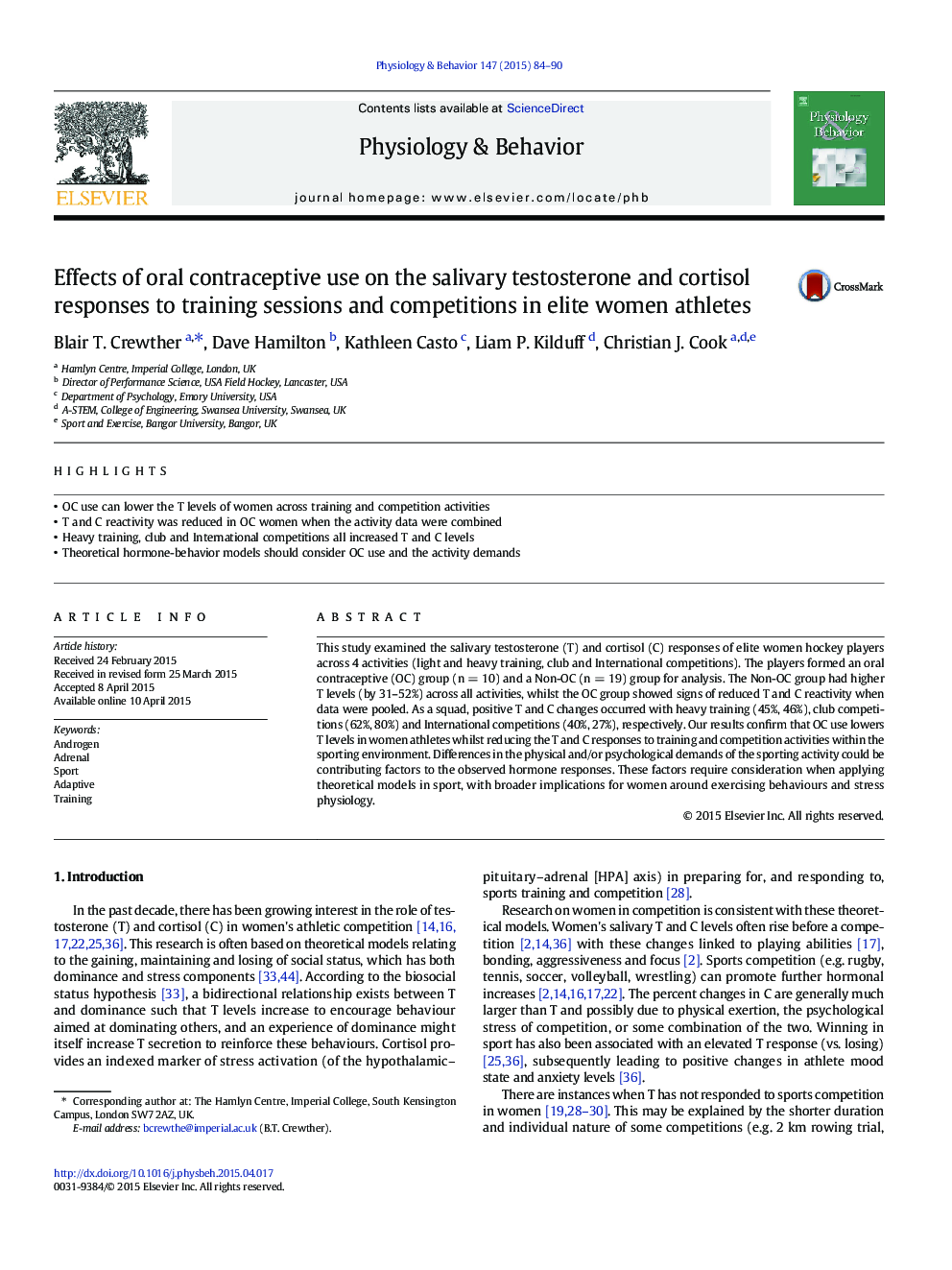| Article ID | Journal | Published Year | Pages | File Type |
|---|---|---|---|---|
| 5923436 | Physiology & Behavior | 2015 | 7 Pages |
â¢OC use can lower the T levels of women across training and competition activitiesâ¢T and C reactivity was reduced in OC women when the activity data were combinedâ¢Heavy training, club and International competitions all increased T and C levelsâ¢Theoretical hormone-behavior models should consider OC use and the activity demands
This study examined the salivary testosterone (T) and cortisol (C) responses of elite women hockey players across 4 activities (light and heavy training, club and International competitions). The players formed an oral contraceptive (OC) group (n = 10) and a Non-OC (n = 19) group for analysis. The Non-OC group had higher T levels (by 31-52%) across all activities, whilst the OC group showed signs of reduced T and C reactivity when data were pooled. As a squad, positive T and C changes occurred with heavy training (45%, 46%), club competitions (62%, 80%) and International competitions (40%, 27%), respectively. Our results confirm that OC use lowers T levels in women athletes whilst reducing the T and C responses to training and competition activities within the sporting environment. Differences in the physical and/or psychological demands of the sporting activity could be contributing factors to the observed hormone responses. These factors require consideration when applying theoretical models in sport, with broader implications for women around exercising behaviours and stress physiology.
